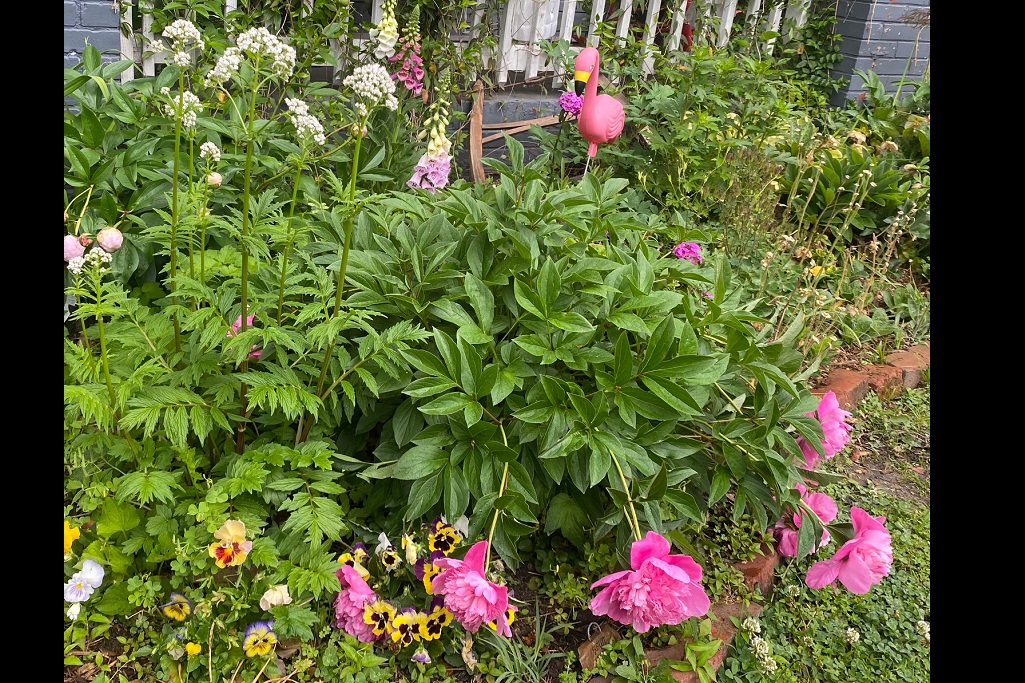“Attack of the Killer Thumbs” aims to provide answers to your garden quandaries and your houseplant conundrums. We think plants make our lives and homes and balconies a better place to be. But we also know that you aren’t made of money. Here you will not find “recommendations” for our “favorite” ninety-dollar gadgets or “quick and easy” tutorials that will cost thousands of dollars to accomplish. We will focus, wherever we can, on solutions that are cheap, easy, and kind to the environment.
Hello and welcome to Attack of the Killer Thumbs!
Spring is HERE, it’s QUEER, it’s unsurprised but unfailingly disappointed in the ways in which the world is going to shit… it’s me. I’m spring. Hello, my sweet plant-loving babies! How are we all? Are we feeling real weird? I know I am! And so is the weather!
Seasonal vibe check
It’s been a weird May! Spring is taking its sweet time — nights in the forties, just when I thought it was safe to put out my tomatoes! Madness! Even so, those nearly 90-degree days are already popping up. Soon it’s going to be hot, starkly illustrating the divide between our warring tribes of indoor and outdoor gardeners.
Whether you’re out hoeing in the sun (lol) or prefer to stay inside with a mister and the AC on, I love you all equally. Remember to love one another. Gardeners, share your tomatoes with the indoor kids! Houseplanters, harvest that aloe when the gardeners turn up lobster-pink and swear that they were definitely wearing sunscreen! Symbiosis!
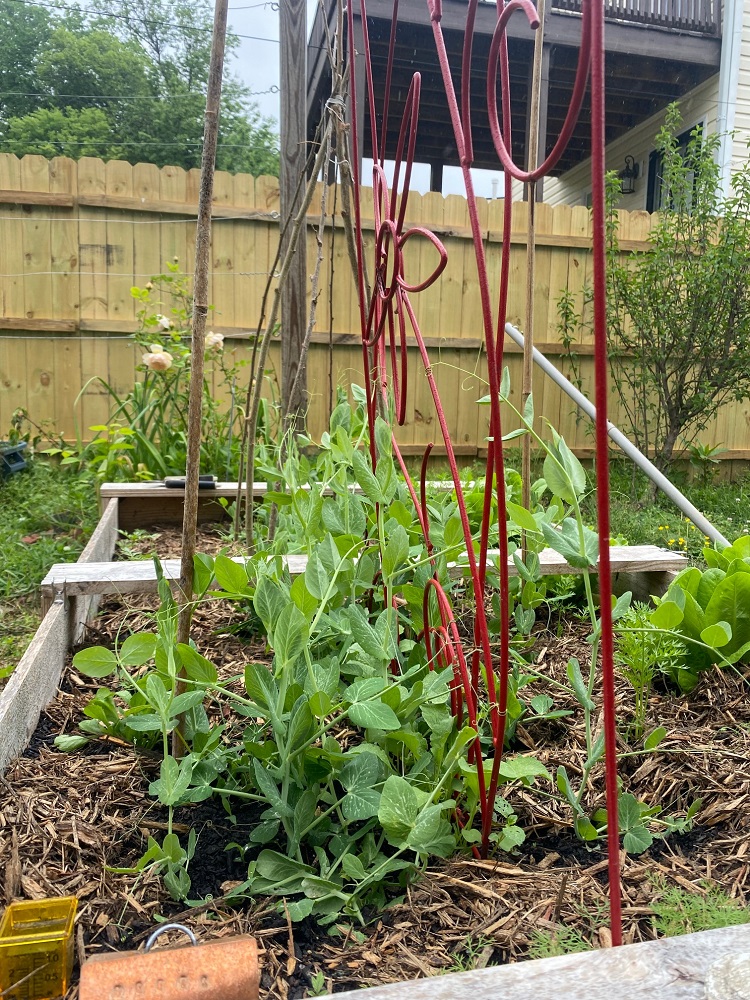
My Dear Old English Granny™ has cast an eye at the horizon and thinks we’re in for a dry summer. This means that May is the perfect time to make sure you can spend the coming months maximizing your water usage as much as possible. Plus, it’s always good to use water thoughtfully!
- If you haven’t yet installed your flower or vegetable beds, make sure that they are designed to retain water. Raised beds should be wide and open-bottomed, as they will dry out more slowly than closed containers. This might be a year to steer clear of lots of little potted plants, unless they get a decent amount of afternoon shade.
- Whether you’re filling raised beds and containers, or planting directly in regular beds, go ahead and be heavy-handed with the compost. You can buy a gorgeous leaf compost at Lowe’s that won’t break the bank and that has been very kind to all my babies. (If you have your own compost, even better!) For established plants, use the compost to top-dress: just spread a solid inch all around.
- Mulch, mulch, mulch! Mulch your beds, mulch your raised beds, mulch your potted plants! Nature abhors a vacuum, and that’s exactly what bare soil is. When you’re buying mulch, be attentive to the fact that certain products (pine, cedar) can affect the pH of the soil they’re spread on. And don’t feel like you can *only* use bagged shredded wood! You can mulch with compost, old leaves, straw, gravel (better for small pots) or even moss.
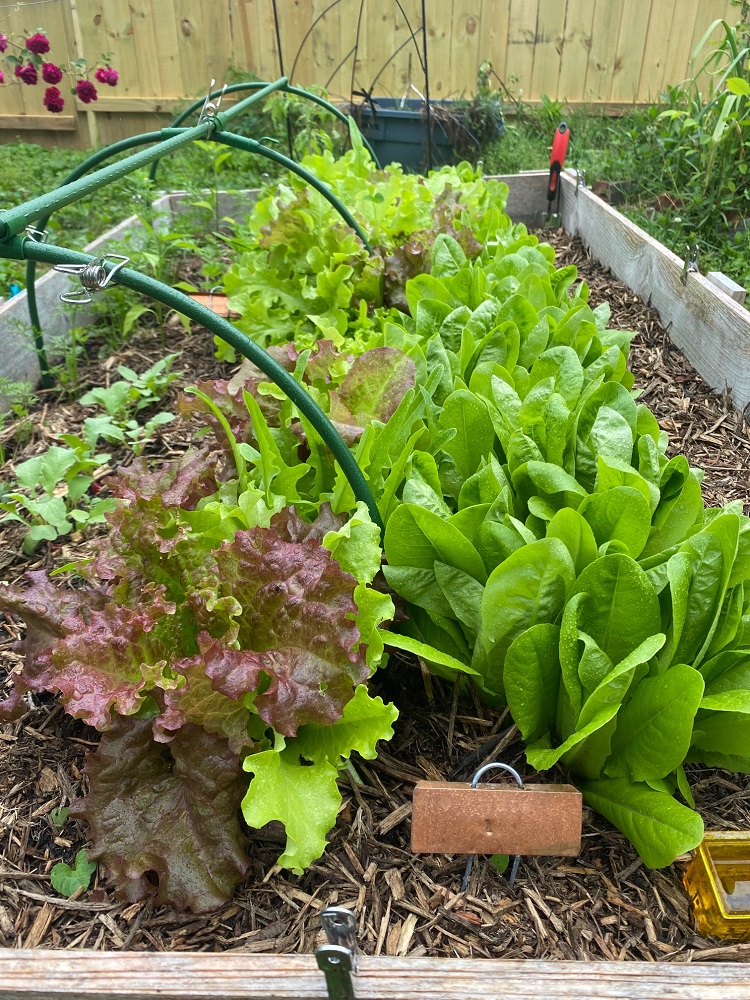
- If you don’t have a rain barrel (or don’t own your house and can’t be arsed to get your useless landlord to install one for you because he still hasn’t fixed that leak under the kitchen sink you told him about six months ago), don’t forget that you can at least harvest some rainwater when it does arrive. Get in the habit of keeping your watering can outdoors. If we’re getting a good downpour, you can always put out a bucket. Especially for you houseplant types! There are lots of sensitive houseplants who prefer rainwater if they can get it.
- Finally, resist the urge to overwater your plants. You do not need to water your garden every single day. A thorough watering every third day is usually plenty. Overwatering encourages plants to establish wide, shallow root systems, which makes them more susceptible to drought. Letting them go without encourages those roots to dive deeper, seeking water further down in the soil.
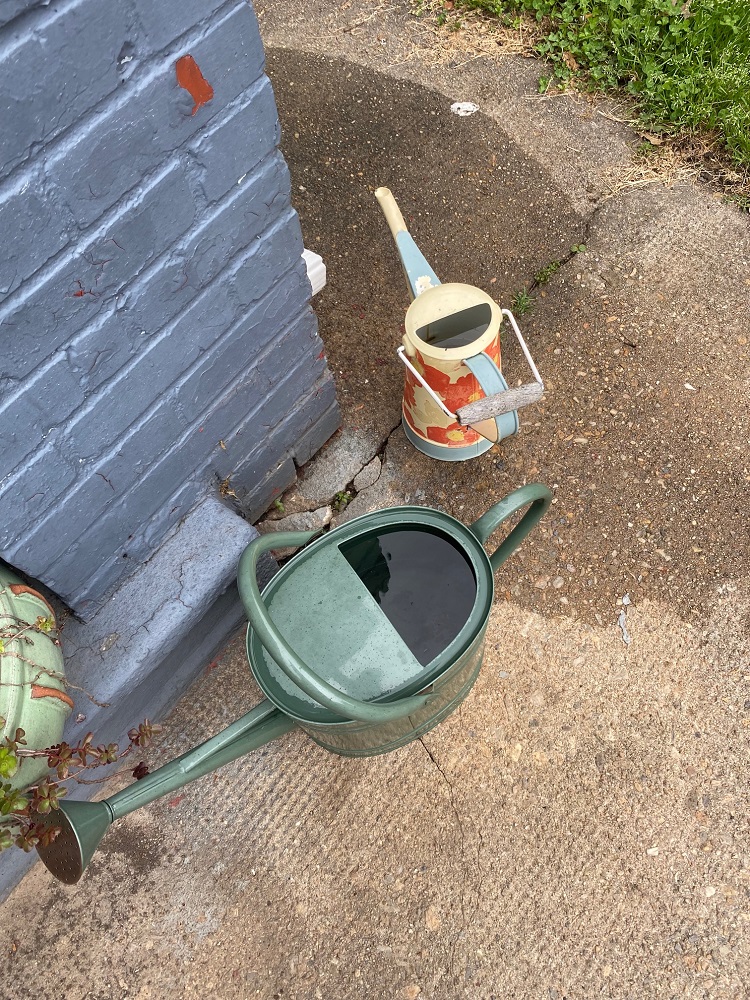
The time has finally come: all your hot-weather children are ready to go outside and/or can be started now. Tomato and pepper seedlings can be transitioned into the garden; in the next few weeks, you’ll be able to start cucumbers, squash, beans, and okra directly in the ground. Just wait until the first few inches of soil are warm to the touch — remember, good gardeners finger their dirt. It’s science.
For those of us in the flower garden, the early spring blooms are beginning to fade, and the high summer flowers are still a few weeks away. A good time to throw around a little seaweed fertilizer (according to package instructions) and show your appreciation for what is still blooming.
Don’t forget to dead-head your roses! <3
Your quandaries, conundrums, queries, and cares
What type of groundcover won’t completely eat my yard and be a nuisance forever?
Ahh, the groundcover games.
As I mentioned above, in reference to mulch: nature abhors a vacuum. Bare soil dries out, it fills with weeds, it turns to a strange and surprisingly powdery dust that your dog rolls in and then rubs all over your sheets… so, yeah, a lot of us have spots or spaces in our yards, containers, and raised beds that we’d like to fill in with a spreading, low-growing plant. The problem is that many of those plants are enthusiastic and fast-spreading, and can eat everything in sight if you don’t keep up with them.
In the garden, there are lots of low-growing plants that can fill in spaces around their taller siblings.
- Sedum is a fantastic groundcover, and I’ve never had trouble with it. Just hardy enough to stay put where you want it, not so hardy that you can’t get rid of it if you want to. Just be sure to check your plant tags! There are varieties of sedum that get quite tall — not so much a groundcover as a feature plant.
- Thyme makes a fantastic groundcover, and you can eat it, which is a bonus!
- Robin’s Plantain is a sweet, fuzzy, native plant that spreads quickly enough to be useful but not so quickly that it’s alarming. Although the leaves stay low to the ground, it puts off surprisingly tall flowers every spring that look like tiny, almost-lavender-in-the-right-light daisies.
These are just a few I’ve had good luck with! You can always go to a nursery and poke around in the groundcover section. Look out for terms like “self-sows readily,” “fast-growing,” or “naturalizing,” all of which can mean “becomes borderline uncontrollable once you get it in the ground.”
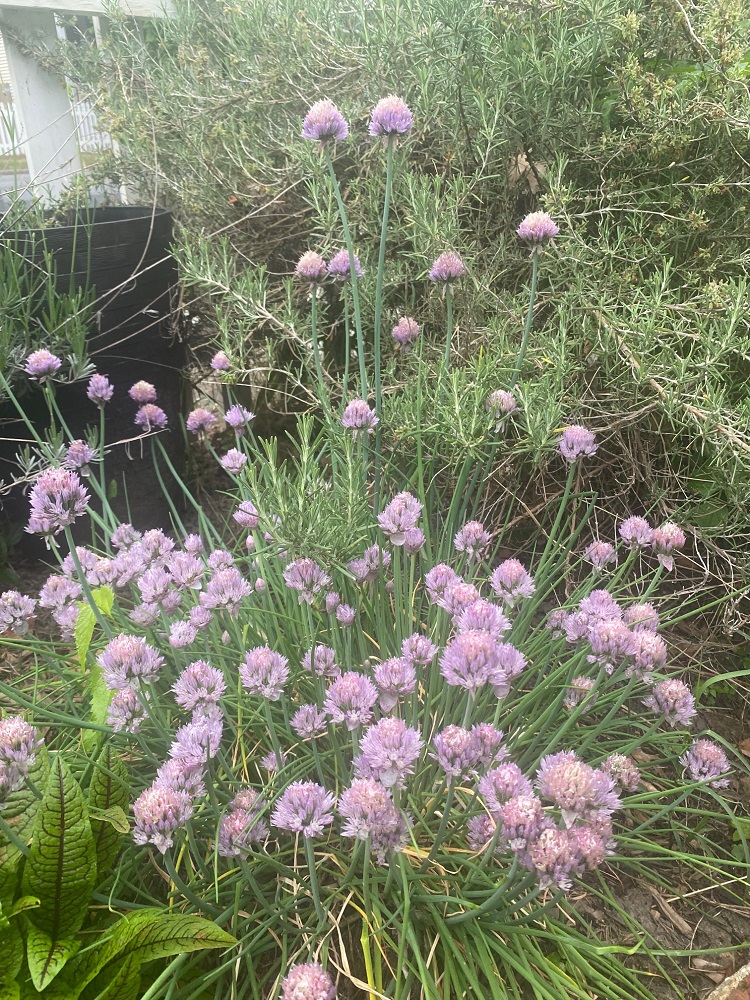
Which brings me to Groundcover Part Two: The Groundening. Maybe you want to cover or fill in a bare spot in your yard. Maybe a shady spot under a tree, or that weird corner where the grass won’t grow because your dog alternates between peeing on it and running over it at top speed.
To many of us, grass is the original groundcover, and we tend to conceive of replacements that match the aesthetic. Different grass. Better grass. Plants that grow like grass but aren’t grass. English Ivy. (Yikes.) But maintaining grass in Richmond’s climate is kind of a nightmare: the below-freezing winters, the ass-sweat-inducing summers, the torrential rains and occasional droughts are not ideal! That being the case, I think the easiest, and most satisfying, answer is to veer away from it entirely.
In my backyard, I’ve allowed the seasonal weeds to take over. They aren’t the prettiest, but they mow just fine, and I’m rarely left with bare soil. Plus, letting chunks of your lawn go feral is good for pollinators! In areas where even the weeds won’t grow, it might be best to surrender entirely and put down mulch. If you just Want A Green Thing Dammit, you can try putting in a hardy groundcover grass (clumping liriope works well — clumping, mind you, never spreading. Check. The. Tag).
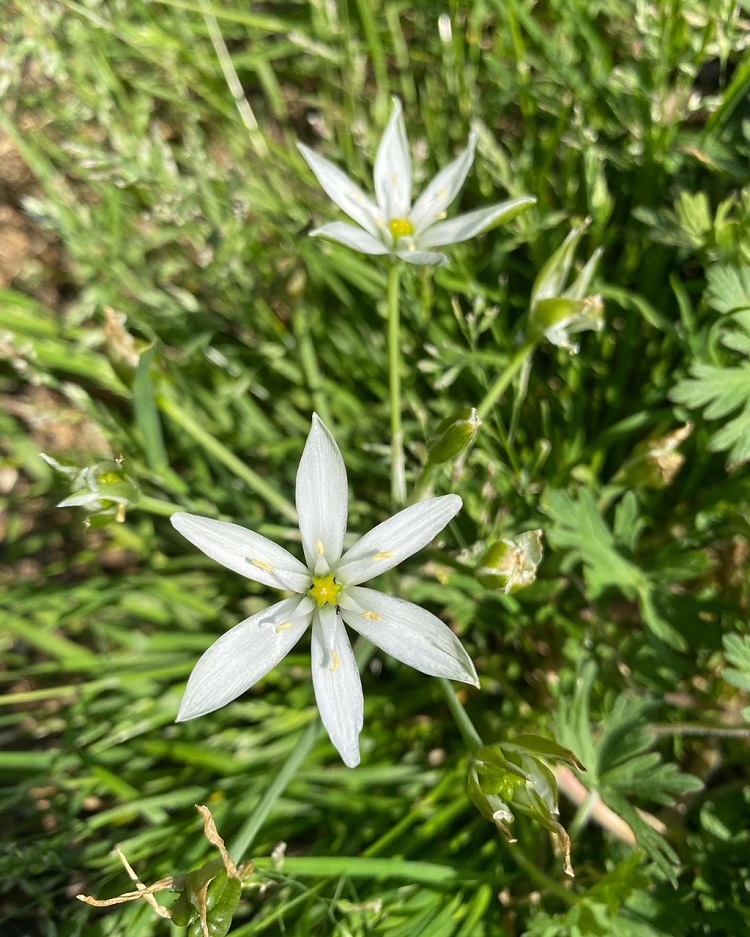
What I’m pondering in the garden this week
The value of a perpetual work in progress.
I think many of us feel an immense amount of pressure toward “completion.” A day where we finally have all our boxes checked, our projects concluded, our socks matched and our fridges organized, our pets well behaved and photogenic. On that day, we will flood Instagram with evidence of our triumphs and invite all our mothers over for tea, confident that our flaws are well hidden and the inevitable messes of progress have been swept under a (well-vacuumed) rug.
May can feel like a race toward an imagined finish line years after the concept of a “summer vacation” has faded into the rearview. Summer is right around the corner, and it’s going to be the best ever, right? Right!?!? There is a sense that it is time, it is past time, time is running through and over us with the inevitability of mosquito bites and underboob sweat and everything has to be done now, now, NOW—
Gardens, though, defy the very concept of completion. There is always something to be moved, divided, pruned, or pulled; always a sense of what could be done differently next year; always a grapple with this season being a little different from the last, just when you thought you had it all in hand.
My garden is a reflection of myself: chaotic, unpredictable, messy at the edges. A sprawling rosemary dominates an otherwise delicate bed like a fat and happy bear. Mint has invaded the rose beds. Trumpet vine — well, all I’ll say is, don’t plant trumpet vine. Nothing is picture-perfect. It’s hardly photographable at all; it defies attempts to coalesce into a pleasing frame from any distance. It wasn’t built that way, because that’s not how I experience it. Streaks of color interrupt lines of foliage. An untidy fence line always seems to make itself visible. It’s meant to be lived in, day by day, change the only constant. The only finished garden is a dead one, robbed forever of the chance to make itself anew, in the way of all growing things.
I take a great joy in that. When completion — perfection — is unattainable, all that is left is process. There is no such thing as too late, because there is no “late” in the garden, only an early start on the next cycle, the next season, the next spring. To garden is to look forward, in perpetuity. And I can think of nothing better.
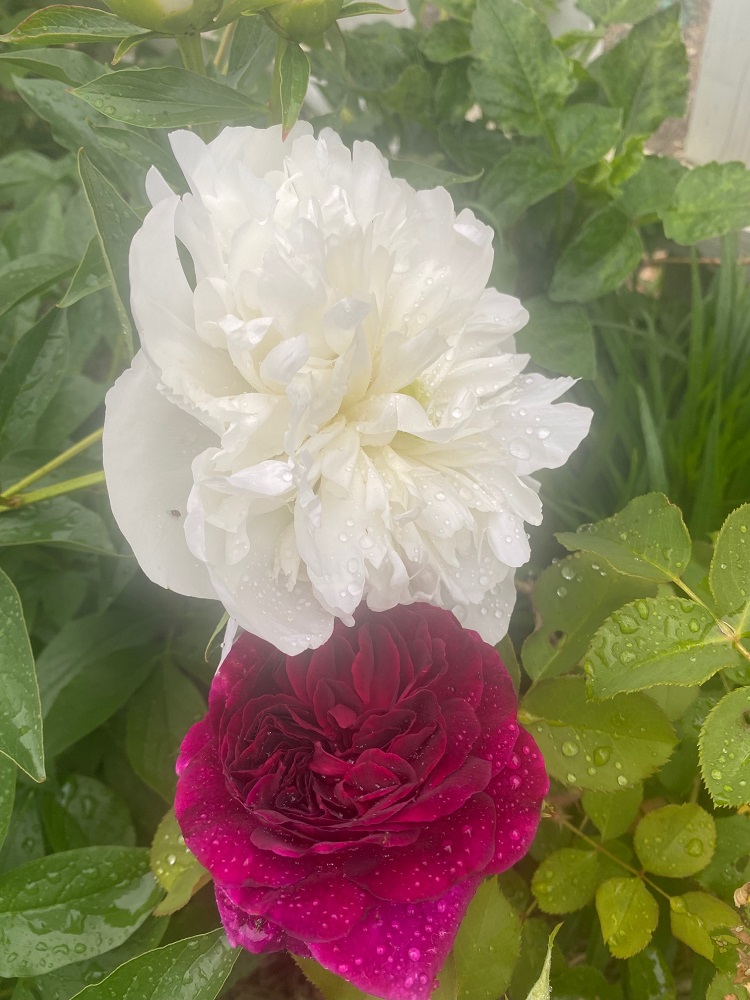
Your garden quote of the month
“I don’t like to imagine time wearing my achievements clean, smoothing them like a statue placed down by the coast. I think I want to be wanted forever but the trick is to let go, stop considering some stars as belongings, let the dandelions sprout seed. I never hate myself when gardening, covered in the muck and filth, wolf spiders skittering back under the pots, a single centipede like a red vein in the brick.”
— “I Keep Making Myself Miserable on the Internet,” by Kim Deyn
Got a plant question you’d like answered here? Spent the afternoon making houseplant memes and none of your friends are finding them as funny as you hoped? Send queries, conundrums and inside jokes to Grace on Twitter @MissHelleborus, on Instagram, also @MissHelleborus, or via email at misshelleborus@gmail.com.
Top Photo: Maude the pink flamingo, supervising my chaos garden. Every year I promise myself I’ll put up frames to keep the peonies from flopping over like they’re drunk every time we get a heavy rain, and every year, I just… don’t. Photo by Grace Todd.

